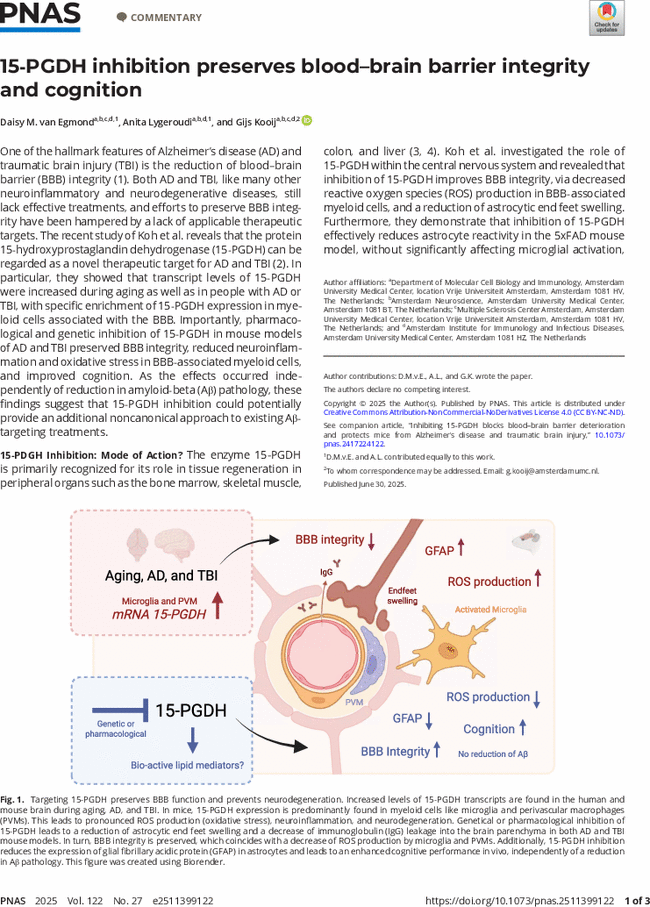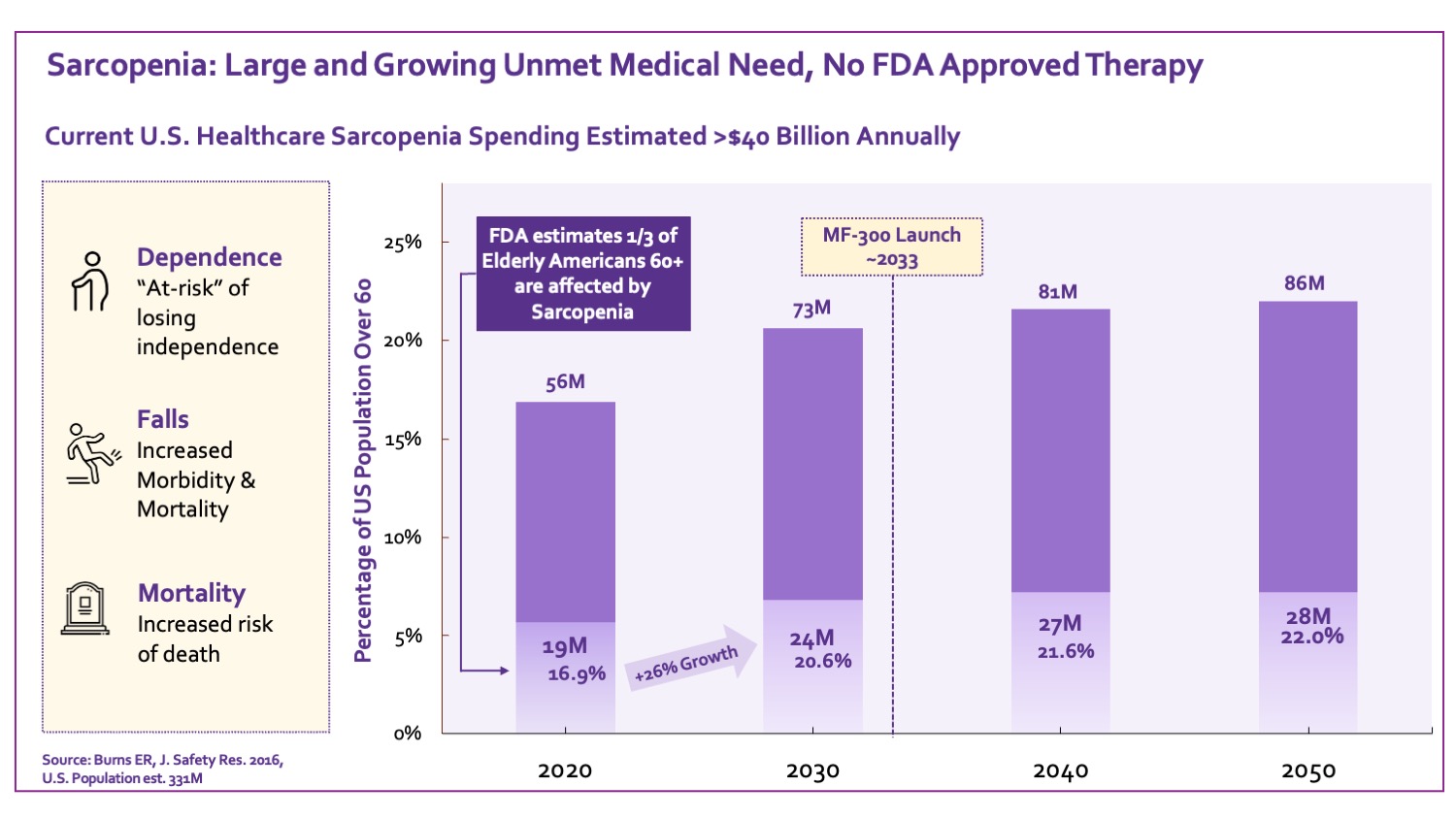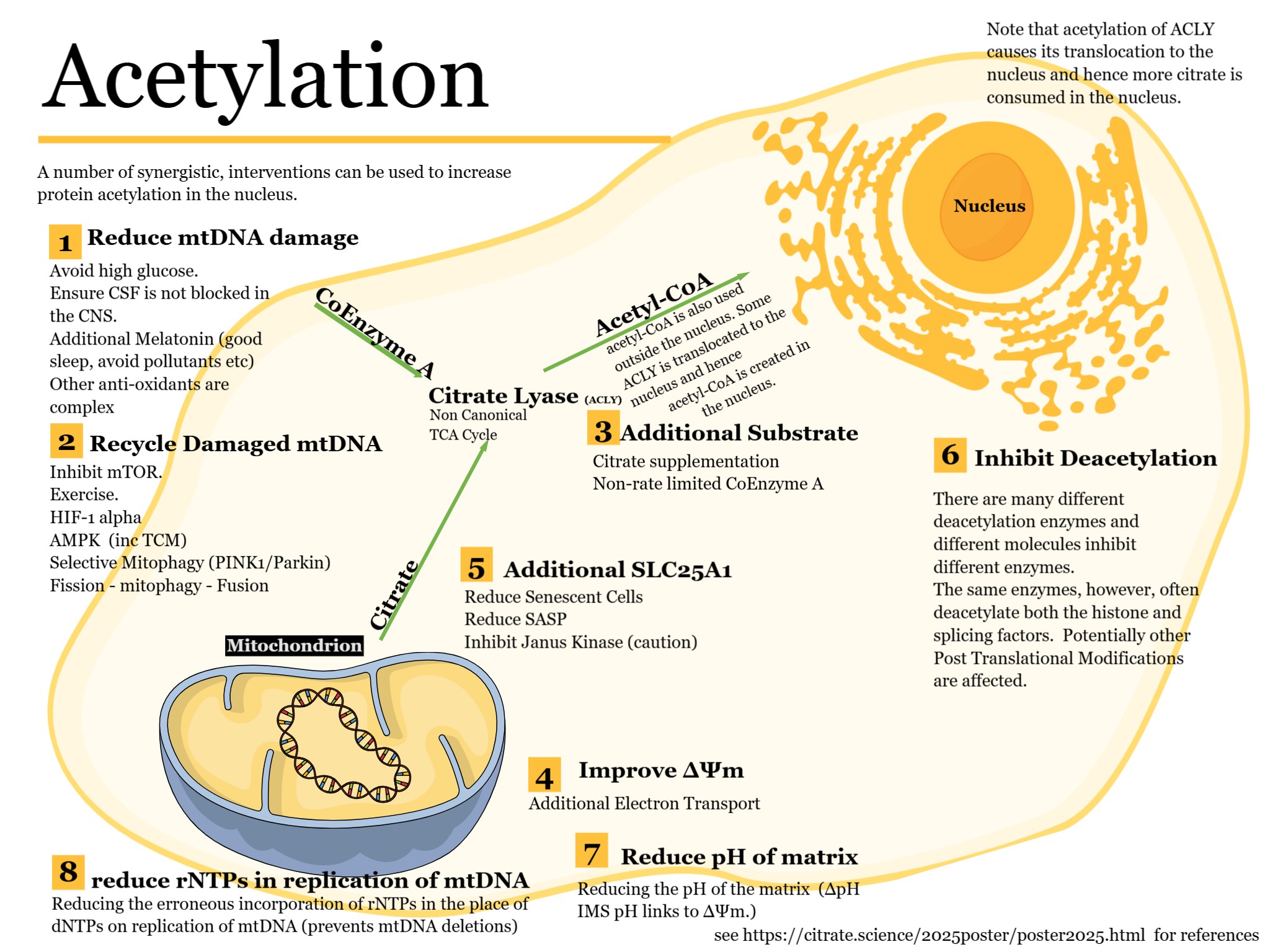More news related to 15-PGDH…
Potential New Treatment for Alzheimer’s Disease, Other Neurodegenerative Conditions
Drug developed by Case Western Reserve University researchers found to protect ‘guardian of the brain’
The BBB acts as a “guardian of the brain” by allowing key molecules to enter and leave the brain, while blocking dangerous substances from the blood, including bacteria and virus. Notably, the researcher said, deterioration of the BBB is an early indicator of many forms of neurodegenerative disease, including AD and traumatic brain injury (TBI).
More specifically, the researchers targeted an enzyme in the immune system—known as 15-PGDH (15-hydroxyprostaglandin dehydrogenase)—that they discovered to be especially highly enriched in the BBB. They found that this enzyme is even further elevated in AD, traumatic brain injury and aging in both mice and humans, and that this change harms the BBB.
New drug
With 15-PGDH in the BBB as the focus, the team used a drug (SW033291) they developed at Case Western Reserve School of Medicine and University Hospitals to block the enzyme.
This enzyme-blocking drug was originally developed in the Markowitz lab with support from the Harrington Discovery Institute and the Case Western Reserve School of Medicine for an entirely different purpose. Specifically, it was first shown by Markowitz and School of Medicine Dean Stan Gerson to activate stem cells to repair tissue damage in mouse models of colitis and bone-marrow transplants.
“Finding together that blocking 15-PGDH also blocks brain inflammation and protects the BBB was an exciting new discovery,” Markowitz said. “Notably, SW033291 didn’t change how much amyloid—a sticky protein that accumulates in Alzheimer’s—was in the brain. This is important because the most recently approved AD drugs focus only on removing amyloid and, unfortunately, don’t work very well and have risky side effects. Inhibiting 15-PGDH thus offers a completely new approach for AD treatment.”
Read the full story:
The Research Paper (Open Access)
Inhibiting 15-PGDH blocks blood–brain barrier deterioration and protects mice from Alzheimer’s disease and traumatic brain injury
Significance
Koh et al. show that 15-hydroxyprostaglandin dehydrogenase (15-PGDH) is pathologically elevated in human and mouse Alzheimer’s disease (AD), traumatic brain injury (TBI), and aging, with 15-PGDH localized to myeloid cells of the blood–brain barrier (BBB). They further show that pharmacologic and genetic inhibition of 15-PGDH protects the BBB, blocks production of reactive oxygen species, prevents downstream neurodegeneration, and preserves cognition in mouse models of AD and TBI. Thus, 15-PGDH inhibition represents a therapeutic approach for AD and TBI by protecting the BBB.


